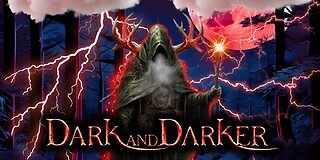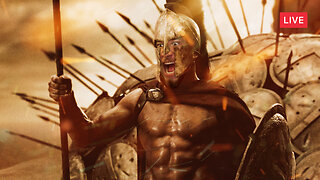Premium Only Content

序破急 jyo-ha-kyuu.【追儺9】
Generally, the term "jyo-ha-kyu" is
in Noh, Gagaku, Haikai and other performing arts in Japan.
It is used in Noh, Gagaku, Haikai, and other performing arts to refer to the rhythm and rapidity of the performance.
However, even in the martial art of iai, which is performed with a sword, a degree of slowness and rapidity seems to exist.
In other words, in the case of "nuki-hazime"
The person who draws the sword does so slowly.
This is called "序jyo" (beginning).
The one who begins to draw gradually increases the speed of the sword, and the one who begins to draw gradually increases the speed of the sword, and the one who begins to draw gradually increases the speed of the sword
breaking the stillness, "破(ha)".
The sword gains speed and
When the sword violently "nuki-tsuke" (slays the enemy), it is "急kyuu" (rapid).
In general, a nuki-tsuki is aimed at the enemy's face (temple).
The reaction of the opponent to this is
How does the opponent dodge?
Or, does he or she dodge?
That is what I depicted in this video.
In iai
the more enemies you face, the more important it is to know that
It is not only a "technique" to swing down the sword,
It is necessary to change your posture flexibly.
It seems that in each school of iaido, such stances can be learned.
However, this story is before the establishment of iaido, so the postures and the names of the techniques may be different.
The modern iaido is a YouTube video of the iaido.
In modern iai, even if you watch youtube videos
It seems that in modern iai, it is forbidden to face an opponent and use a sword face to face.
It seems that the form of practice and matches are done alone.
Also, there is a saying in Japan,
"The merit of a sword that is not pulled out
(nukanu-tatino-koumyou 抜かぬ太刀の功名)"
This means that the first thing to do is to discuss and settle the problem peacefully, and the sword is not to be pulled out.
It is said that it is best to win without drawing the sword.
-
 LIVE
LIVE
Grant Cardone
5 hours ago10X Business Summit Day 2
7,013 watching -
 13:24
13:24
Talk Nerdy Sports - The Ultimate Sports Betting Podcast
2 hours ago4/13/25 - Sunday Strike Team: Tactical Bets, Brutal Truths, Full Redemption
20 -
 1:11:33
1:11:33
Wendy Bell Radio
9 hours agoWeekends With Wendy
50.8K175 -
 1:35:07
1:35:07
Man in America
1 day agoPeptides: Ultimate Health Hack… or Big Pharma Gila Monster POISON? w/ Dr. Diane Kazer
177K93 -
![The Legend of Zelda: Oracle of Seasons | Part 3 [Finale]](https://1a-1791.com/video/fww1/d1/s8/1/F/H/N/B/FHNBy.0kob-small-The-Legend-of-Zelda-Oracle-.jpg) LIVE
LIVE
JdaDelete
3 hours ago $1.80 earnedThe Legend of Zelda: Oracle of Seasons | Part 3 [Finale]
177 watching -
 LIVE
LIVE
MrR4ger
17 hours agoNEW ERA FOR DaD?? - DARK and DARKER HELLDIVERS 2 w/ @M3thods AFTER
142 watching -
 32:55
32:55
The Connect: With Johnny Mitchell
1 day ago $7.53 earnedInside America's LARGEST Pot Trafficking Gang: How Florida Fishermen Became #1 Most Wanted Cartel
83.9K16 -
 6:39:57
6:39:57
Biscotti-B23
8 hours ago $2.75 earned🔴 LIVE EARLY ACCESS RANKED GRIND ⚽ THE BEST FOOTBALL GAME OUT 💥 REMATCH
45.4K2 -
 8:00:02
8:00:02
SpartakusLIVE
1 day agoFIRST Pick of the Fourth Round for the $100,000 Tournament
113K3 -
 16:18
16:18
Mrgunsngear
17 hours ago $25.20 earnedBlack Aces Tactical S4 Tactical - Benelli M4 Clone But Does It Work?
144K16